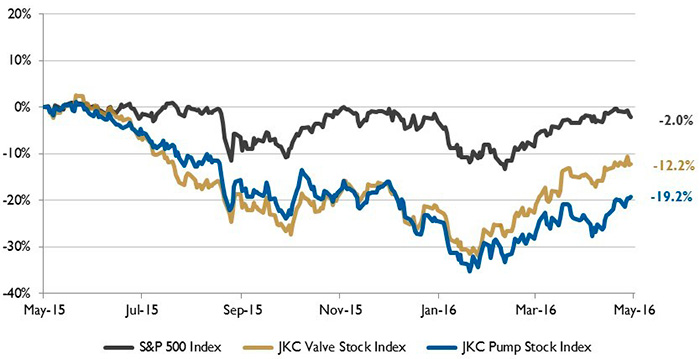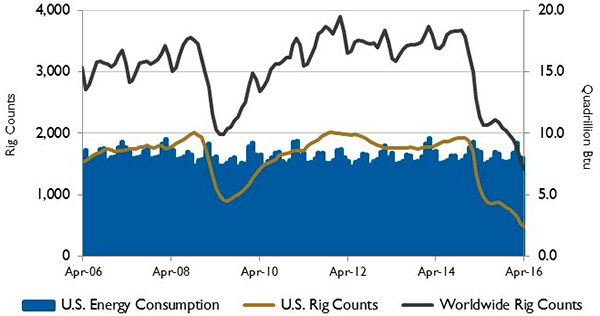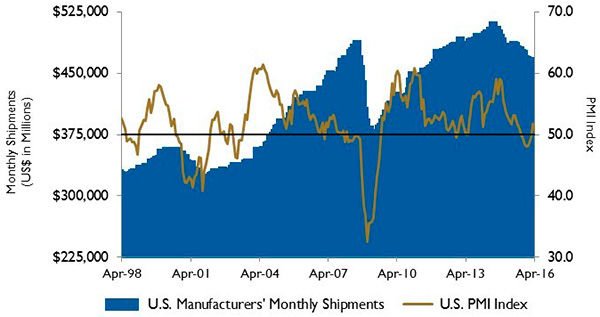The Jordan, Knauff & Company (JKC) Valve Stock Index was down 12.2 percent over the last 12 months, while the broader S&P 500 Index was down 2.0 percent. The JKC Pump Stock Index also decreased 19.2 percent for the same time period. Manufacturing activity improved for the second month in a row with the Institute for Supply Management's Purchasing Managers' Index (PMI) registering 50.8 percent in April. Expansion continued in new orders, production and backlogs. For the month, 15 of the 18 industries reported an increase in new orders (up from 13 in March) and production (up from 12 in March). For the second consecutive month, the export orders index was above 50, reaching 52.5 in April, its highest level since November 2014. Although the employment index rose 1.1 percentage points to 49.2 percent over last month, it remained at contraction levels.
 Figure 1. Stock indices from May 1, 2015, to April 30, 2016. Source: Capital IQ and JKC research. Local currency converted to USD using historical spot rates. The JKC Pump and Valve Stock Indices include a select list of publicly traded companies involved in the pump and valve industries weighted by market capitalization.
Figure 1. Stock indices from May 1, 2015, to April 30, 2016. Source: Capital IQ and JKC research. Local currency converted to USD using historical spot rates. The JKC Pump and Valve Stock Indices include a select list of publicly traded companies involved in the pump and valve industries weighted by market capitalization. Figure 2. U.S. energy consumption and rig counts. Source: U.S. Energy Information Administration and Baker Hughes Inc.
Figure 2. U.S. energy consumption and rig counts. Source: U.S. Energy Information Administration and Baker Hughes Inc. Figure 3. U.S. PMI and manufacturing shipments. Source: Institute for Supply Management Manufacturing Report on Business and U.S. Census Bureau
Figure 3. U.S. PMI and manufacturing shipments. Source: Institute for Supply Management Manufacturing Report on Business and U.S. Census Bureau
